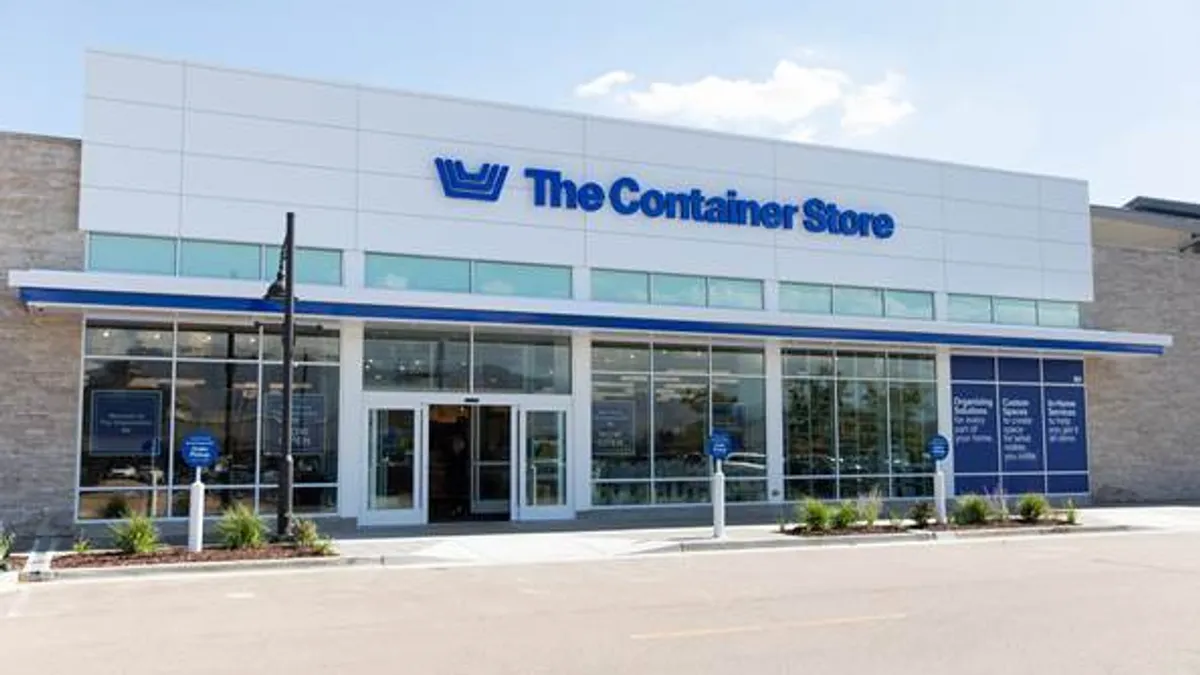As consumer usage of mobile payment platforms in the U.S. continues to evolve, retailers may be wondering where it’s all going and if a true cashless, cardless economy could really be on the horizon. But to know what that future will look like, merchants should look east to China where there is a nearly cashless society, and the most mature mobile payments market on the planet.
Yet even as retailers look east for that vision of the future, the market share leader of that most advanced mobile payments market — a company with more than 600 million Chinese users of its app — is looking west. Alipay, owned by Ant Financial, an affiliate of Chinese e-commerce giant Alibaba, has forged an array of partnerships over the last year or so designed to give it a presence in the U.S. market and more broadly in North America.
That effort began about this time last year with a partnership with First Data, and was followed by similar deals with JP Morgan Chase and North American Bancard, among others. These relationships are designed to get Alipay accepted as a form of payment at as many of the merchant clients of these payment companies as possible.
Richard Crone, principal at Crone Consulting, a firm that long has been studying the gradual adoption of mobile payments in the U.S., told Retail Dive, "That’s really the first step for any payments app coming into a new market. You wanted to get it accepted at as many merchants as possible, and Alipay has been very aggressive lately at pursuing merchant acceptance in North America."
Alipay’s stated purpose is to focus on Chinese tourists here who want to use their preferred native payments app while shopping, visiting restaurants and entertaining themselves as they travel. Chinese immigrants living in the region also are seen as a next tier of potential users. The effort has been gaining traction with U.S. merchants, as Lacoste earlier this year agreed to accept Alipay in its U.S. stores as a result of Alipay's partnership with Verifone.
Meanwhile, the U.S. mobile payments market, while still in its early days compared to China, has never lacked for competitive drama. Mobile wallets from PayPal, Apple, Android, Samsung and numerous others are all jockeying for position, along with a cadre of self-branded mobile payment apps from retailers like Walmart, Target, Starbucks and CVS, among others. Alipay’s addition to the market, even in a limited way, leaves one to wonder if the Chinese giant's goals in the U.S. are as narrowly-focused as they seem, and what U.S. mobile payments players might be able to learn from this visitor from the cashless society of the future about what sort of evolutionary path they should take with their own payment apps.
Not interested becoming a U.S. wallet
Mobile payments players in the U.S. may breathe a sigh of relief to hear upfront that Alipay’s end-game in the region is not to challenge them for the attentions of U.S. consumers, according to Souheil Badran, president of Alipay North America. It’s aim is to work with merchants here to accept Alipay at checkout so that Chinese tourists traveling throughout the region can use the form of payment they have become most accustomed to at home.
"Our focus in the U.S. is not to create a U.S. wallet," Badran told Retail Dive. "We believe this is a market crowded with different mobile wallet options, and we’re not interested in competing with them. Our focus is on the Chinese tourists."
If that sounds like too narrow of an audience to consider accepting a new method of payment for, think again. Chinese tourists traveled overseas 131 million times last year, spending more than $5,600 per visit and 65% of such travelers have paid via mobile at merchants and restaurants during their travels, according to a recent study from Alipay and Nielsen Research. A 2017 report from the U.S. Department of Commerce noted that about 3 million Chinese tourists visited the U.S, alone in 2016, spending about $33 billion overall, an increase in spending of about 9% over the previous year. And while this doesn't break out sales at merchant locations, retail, hospitality and entertainment are a larger component tourist spending.
Essentially, Alipay is simply trying to follow its own free-spending users into other markets where they are purchasing and paying for goods and services. To understand why, it first helps to understand the state of China’s mobile payments market, and how much pressure Alipay is facing there from competitors.
Alipay has been available in China since 2009, wining dominant market share in a market that now tallies more than 600 million mobile payment users. However in recent years, Alipay’s dominance has been challenged by WeChat Pay, the mobile payment feature from social media giant WeChat and its parent company Tencent Holdings. A real battle is brewing betwettn the two: Just last month Reuters reported that Walmart has stopped accepting Alipay at its stores in Western China in favor of WeChat Pay.
"The Chinese market is approaching saturation, both Alipay and WeChat Pay need to find new audiences to deliver new revenue streams. It has become an international competition."

Windsor Holden
Head of Forecasting, Juniper Research
As the two go toe to toe in China, a mature market in which new users may be hard to come by, the rivalry is spilling past these borders (Like Alipay, WeChat Pay and another huge competitor, Union Pay, are making similar efforts to win over U.S. merchants.)
"The Chinese market is approaching saturation," said Windsor Holden, head of forecasting and consultancy with Juniper Research, in an e-mail exchange with Retail Dive. "Both Alipay and WeChat Pay need to find new audiences to deliver new revenue streams. It has become an international competition."
Such an expansion requires a marketing approach primarily focused on building awareness among merchants. While the U.S. mobile payments market may not be as active as China, it’s still fairly crowded, but Badran doesn’t see that as an impediment to getting noticed by U.S. merchants.
"No one else is talking to these merchants about Chinese consumers," he said. "It’s also a different approach to marketing because we can generate offers through the app to bring those Chinese consumers into your store, so we can help bring new business."
Letting the consumer choose
No form of mobile payment offered in the U.S. has anywhere near the hundreds of millions of users that Alipay and other Chinese market leaders have. Crone told Retail Dive that the U.S. mobile payments market, though fragmented among mobile players like Apple and Google, retailers with their own apps like Walmart and Starbucks, and card networks like Chase are growing user adoption at close to 10% per year. According to his latest research, Venmo, the peer-to-peer payment platform that has begun to target merchant acceptance, has 32 million active users, Apple Pay had 29 million, Starbucks about 23 million, Walmart 21 million and Android Pay around 15 million. Chase Pay, a late-addition, has collected about 2 million users.
Despite the array of payment apps, some retailers may only accept one of these options. Some have preferred mobile payment partners (accepting Android Pay or Apple Pay, but not others), or may even have promote their own branded mobile payment apps heavily without mentioning they accept others.
But it behooves them to allow consumers to use the payment method they prefer, and Alipay believes they are coming around to that notion. "Brands and merchants are starting to become more agnostic about payments," Badran said. "The consumer is going to use the form of payment they want to use. They will be attracted to locations that allow them to do that, and through the app we can help them find those locations."
Juniper’s Holden agreed, saying that most merchants already have confronted this reality with credit cards, recognizing they need to accept a variety, and not just their own store cards, or risk losing business. "When I pay in-store, I want to be able to use the same card or app in every store," he said. "Imagine going into Walmart and being told that you can’t use a Citi card, you can only use a Walmart card to pay."
As Alipay forges more partnerships within the payments ecosystem that serves North America and the U.S., and helps more merchants here become aware of the additional revenue opportunity they can tap into by accepting Alipay, it appears likely Alipay will be just a specialized mobile wallet, one used by Chinese tourists and that doesn’t try to steal users away from the Apple and Walmart Pays on this side of the globe.
While achieving wider acceptance at U.S. merchants will raise Alipay’s profile in this region, and perhaps give it a foothold to further raise awareness among native North American consumers, Badran insisted there is no roadmap for Alipay to eventually cater to U.S. consumers.
Holden also said it’s unlikely for the foreseeable future that Alipay or any of its Chinese rivals make a breakthrough connection to the U.S. consumer market, but that they still can find the new growth channels they are looking for here as they expand outside their own near-saturated market.
"Both Alipay and WeChat are likely to see huge adoption in the U.S., among Chinese tourists in the first instance," he said. "These payment mechanisms have, incredibly, eclipsed both cards and cash for in-store payment in China, and if U.S. retailers offer these options, it will reduce friction at POS. Outside this target audience, I would say the next layer will be Chinese immigrant workers, both in-store and sending money home. Beyond these, adoption may take time."
Not just an app
If Alipay isn’t a competitor to the payment apps of mobile players and retailers in North America, it may represent a model of what other mobile payments apps here should strive to become.
Badran said he doesn’t see Alipay as a pure mobile payments app, or as a single app, but an interface to a collection of many "sub-apps" that its users can tap into on a daily basis to satisfy different needs. They use it not just at merchant checkout, for example, but also for ordering an Uber car, sending money directly to friends, requesting instant financing for a purchase and even for something like unlocking a bike lock at public stations where bikes can be rented.
"Alipay is not just one app, but many sub-apps to do different things to give it broader utility. That makes it more of a digital lifestyle app that someone can use every day for many things than just a mobile payments app."

Souheil Badran
President, Alipay North America.
Alipay’s typical user in China uses the app 12-14 times per month for a variety of needs, Badran said. Gaining initial acceptance at North American merchants will help Alipay users to use the app more often while they travel, but it probably will take some before Chinese tourists can use Alipay the way they do at home. Although Badran said the effort to grow beyond merchant locations here already is starting. For example, the relationship with Verifone that got Alipay into Lacoste stores here also gave it access to be used to pay for taxi rides in New York and Las Vegas, he said.
"Alipay is not just one app, but many sub-apps to do different things to give it broader utility," he added. "That makes it more of a digital lifestyle app that someone can use every day for many things than just a mobile payments app."
That means that as mobile payment players here may feel safe to dismiss Alipay as a potential direct competitor, they may still want to take note of how Chinese tourists are using the app, where and how often. It could provide them with some inspiration for how their own apps should evolve in the future.




















